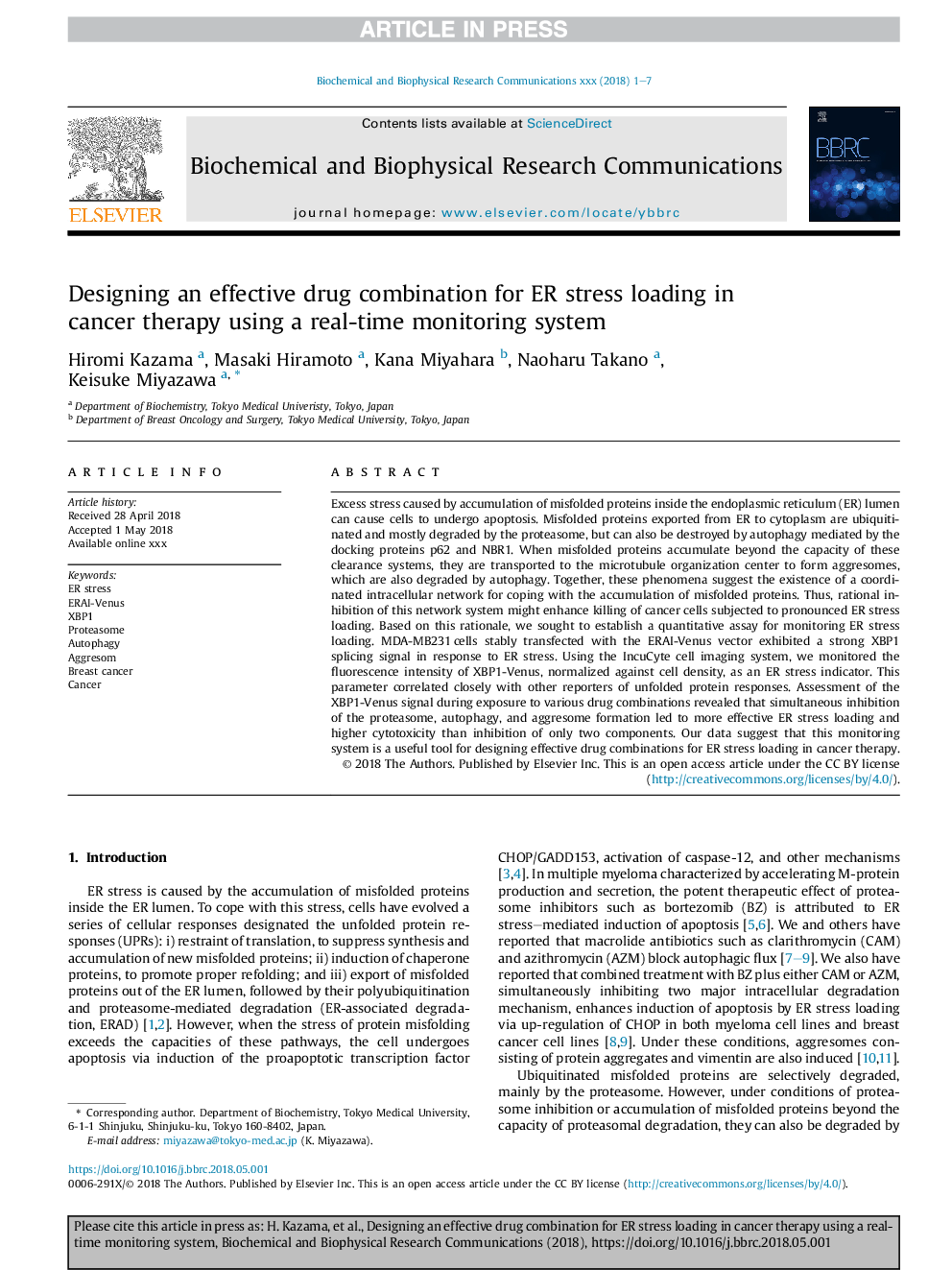| Article ID | Journal | Published Year | Pages | File Type |
|---|---|---|---|---|
| 8292695 | Biochemical and Biophysical Research Communications | 2018 | 7 Pages |
Abstract
Excess stress caused by accumulation of misfolded proteins inside the endoplasmic reticulum (ER) lumen can cause cells to undergo apoptosis. Misfolded proteins exported from ER to cytoplasm are ubiquitinated and mostly degraded by the proteasome, but can also be destroyed by autophagy mediated by the docking proteins p62 and NBR1. When misfolded proteins accumulate beyond the capacity of these clearance systems, they are transported to the microtubule organization center to form aggresomes, which are also degraded by autophagy. Together, these phenomena suggest the existence of a coordinated intracellular network for coping with the accumulation of misfolded proteins. Thus, rational inhibition of this network system might enhance killing of cancer cells subjected to pronounced ER stress loading. Based on this rationale, we sought to establish a quantitative assay for monitoring ER stress loading. MDA-MB231â¯cells stably transfected with the ERAI-Venus vector exhibited a strong XBP1 splicing signal in response to ER stress. Using the IncuCyte cell imaging system, we monitored the fluorescence intensity of XBP1-Venus, normalized against cell density, as an ER stress indicator. This parameter correlated closely with other reporters of unfolded protein responses. Assessment of the XBP1-Venus signal during exposure to various drug combinations revealed that simultaneous inhibition of the proteasome, autophagy, and aggresome formation led to more effective ER stress loading and higher cytotoxicity than inhibition of only two components. Our data suggest that this monitoring system is a useful tool for designing effective drug combinations for ER stress loading in cancer therapy.
Related Topics
Life Sciences
Biochemistry, Genetics and Molecular Biology
Biochemistry
Authors
Hiromi Kazama, Masaki Hiramoto, Kana Miyahara, Naoharu Takano, Keisuke Miyazawa,
